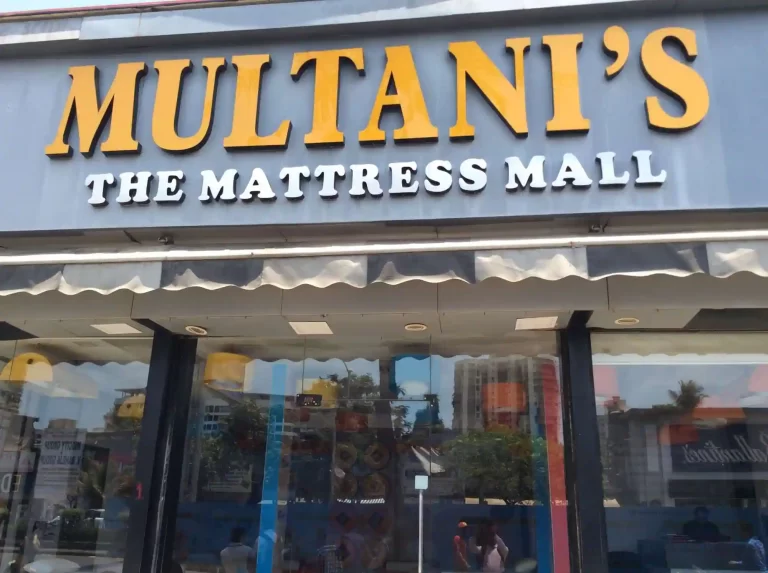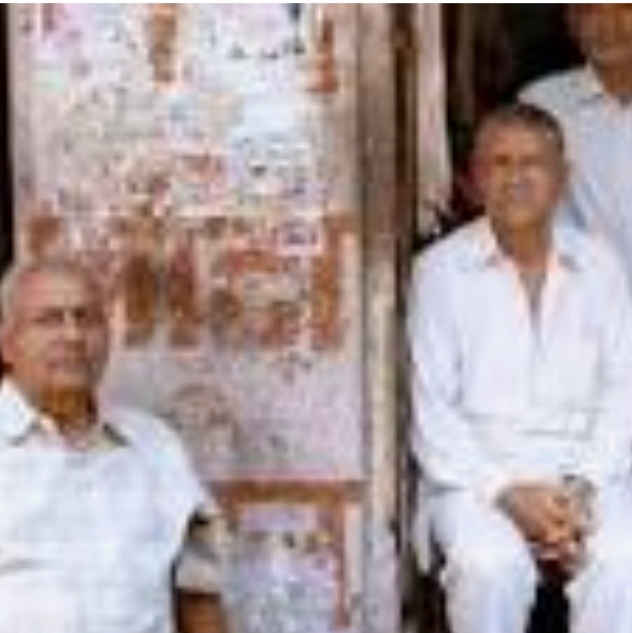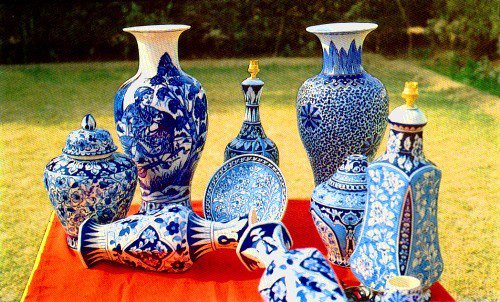
The families that arrived here became involved in sundry trades. It was the indefatigable Punjabi spirit that saw them through the hardship of losing it all and starting afresh. The number of the original settlers has dwindled, but those that remain continue to pursue the same trade.
Brinda Suri
Masalas, fried snacks and mock meat are only some of the things that a community of indefatigable Punjabis carried across the border during Partition
It is his father’s advice that has stood 75-year-old Shyamsundar Chawla in good stead. “Pitaji always said, whenever you receive money it should be handed to you but never placed on your palm. In other words, never beg for money, work hard to earn it,” says Chawla, a confectionery shop owner in New Delhi’s Multani Dhanda, and among the last remaining few who had witnessed the birth of India.
 Chawla was just five when he arrived in Delhi in 1946, a year before the Partition, from Haram Darwaja in Multan, now in Pakistan’s Punjab. The Chawla family of Multan’s androon shehr (Punjabi for ‘Walled City’) was a large one. “Towards the end of 1946, the situation in Multan was turning volatile. Pitaji suggested we spend a few months in Delhi till the chaos died down. We locked our house and came here. We never imagined we would never return to unlock it. Or that the country would be partitioned…” he trails off.
Chawla was just five when he arrived in Delhi in 1946, a year before the Partition, from Haram Darwaja in Multan, now in Pakistan’s Punjab. The Chawla family of Multan’s androon shehr (Punjabi for ‘Walled City’) was a large one. “Towards the end of 1946, the situation in Multan was turning volatile. Pitaji suggested we spend a few months in Delhi till the chaos died down. We locked our house and came here. We never imagined we would never return to unlock it. Or that the country would be partitioned…” he trails off.
Even after over seven decades in Delhi, for Chawla, 1947 — the year of the Partition — feels like yesterday. The septuagenarian opens his 12 sq. ft. shop in Multani Dhanda, a stone’s throw from New Delhi Railway Station and the backpacker hub of Paharganj, at half-past five every morning. He doesn’t want to disappoint customers who bank on him for early-morning supplies of milk and bread. Despite an eviction notice from his landlord, Chawla is unwilling to relocate. “Where will I go at this age? The landlord is acting tough and has stopped taking rent,” he says. “The first rent I paid for this shop was chaar anna (25 paisa). I wonder if you know what that looks like,” he asks. I nod a yes, saying I used to buy a guava with that in my schooldays. Chawla smiles. “After the next hike, it became aath anna (50 paisa), then ₹1 and later ₹1.50. Until two years ago I used to pay ₹3; that was the last hike,” he adds. I check a couple of times to confirm I hadn’t misheard. A customer stops by and pays ₹42 for breakfast goods. That is more than the total annual rent Chawla paid in the recent past. I wish him well and walk away baffled. ₹3 in 2016? Suddenly 1947 seems closer than yesterday.
As the name suggests, Multani Dhanda is home to those who fled Multan during the exodus of Partition. The families that arrived here became involved in sundry trades. It was the indefatigable Punjabi spirit that saw them through the hardship of losing it all and starting afresh. The number of the original settlers has dwindled, but those that remain continue to pursue the same trade.

Also read: Multanis in India want to preserve their language, culture
One of these is Thakurdas Omprakash Purchun Vikreta, a general provisions shop “that’s as old as independent India”, according to co-owner Umesh Chugh. “It has remained the way it was when my uncles and father set it up. My family had a shop with a similar name at Hannu ka Chajja in Multan. So they decided to continue with the same name, same trade and same ethics,” he says.
Chugh’s octogenarian uncle, the head of the family, has firmly disallowed any changes. So the stock of dal, chawal and atta are still in old-fashioned tins and the till goes into a lidded box. Unlike supermarkets or grocery stores where pre-packaged branded stuff rules, you can buy provisions out of a sack here and they can be as little as 100g of rice. Seeing me chatting with Chugh, his neighbor comes forward and they exchange pleasantries in Multani. I can decipher a bit of this dialect of Punjab and ask if their children speak it too. “They haven’t bothered to learn it,” says the neighbor. “We haven’t bothered to teach them,” clarifies Chugh.
The Partition brought hordes of migrants from West Punjab to Delhi. They came from almost all districts: Rawalpindi, Sargodha, Peshawar, Multan, Sialkot Chakwal, Chiniot, Jhelum, Jhang and Lahore. Over time, similar dialect speakers would settle down together and that’s how the many colonies sprung up in Delhi, a city which has for centuries resembled a salad bowl — one in which cultures have mingled while retaining individual flavours. The sanjha chulha , or community tandoor, a traditional Punjabi concept (dating back to the times of Guru Nanak, who encouraged eradication of caste hierarchy through community kitchens), emerged as a great binder for displaced families. The food carts selling accompaniments for the tandoori rotis were an extension of this. These were also the beginnings of many a culinary story from Dilli ki galiyaan. At one spot in Daryaganj, innovation led to the birth of the now-ubiquitous butter chicken and kali dal makhni , two items that were, until then, unheard of in Punjab.
Around the same time, at Multani Dhanda, tastes of home were being recreated in the new kitchens. Some stepped out and set up shop and that’s how Multan Moth Bhandar was established. Ask anyone where Gali Number 6 is, and pat comes the query “Moth Bhandar jaana hai?” That’s how synonymous they are.
Watch the Video: Interview with a Multani Indian
The rickshaw drops me outside the shop and I spot young Tushar Chawla seated cross-legged, surrounded by pots and flat pans. He’s swiftly filling donas (little leaf bowls) with what is most popular: moth kachori. It’s a Multani speciality that the shop’s been serving for close to seven decades. There’s a system to filling the dona : first, in goes a bit of rice, then a ladle of moth dal, a garnish of pickled onion juliennes and spiced green chillies. This is finally topped with two plump and crispy kachoris. In between the layers goes a sprinkling of the much-relished Multani masala, a hot-sour powder particular to the community. The combination is full of textures and bursting with flavours.
At ₹25 a dona it’s worthy fare, and despite the unhygienic surroundings, the shop attracts customers all day for moong kachori (till 11.30 am) and moth kachori (from 12 noon till the dough lasts) and a few other regulars.
Watch a Video: Multanis in Mumbai
A few yards away is Multani Chole Chawal aur Geela Kulcha; the shop name says it all. What it doesn’t include is the delicious soya chaap curry it serves. The chaap is another forte of this area. As the legend goes, Hindu Khatris of Multan did not eat chicken or meat but captured the flavour by creating soya and wheat-based products. That’s how the gastronomic lexicon got chaap (derivative of lamb chop), which tastes like chicken, and mukund vari, which is a substitute for meat.
The bulk of Delhi caterers buy their soya chaap from Multani Dhanda while “the mukund vari is bought by restaurants, dhabas and individuals,” says Deepak Arora of Deepak Corner, which sells both items in bulk. Arora is also popular for his homemade Multani masala (₹320/kg), and discloses the magic ingredient — anardana (pomegranate seeds) — with reluctance. He doesn’t like to dwell in the past. Thus his is a spiffy new shop, but with the characteristic ‘ purani, mashoor dukan ’ (old, famous shop) tag.
Watch the Video: Multani Language in Mumbai
A short distance ahead, Janta Sweets keeps alive a breakfast tradition by serving malpua and halwa, besides other treats like the moong dal samosa — inspired by the kachori. Residents of this area may have shifted out but they take a route that leads them back to Multani Dhanda for chit-chat and to stock up on their favorites. Owner Kapil tells me about a customer who even offers to drop his neighbors’ guests to the railway station just to seize a chance of coming here to enjoy a meal straight off the chulha . I ask him whether anyone makes doli roti, a deep-fried flatbread leavened with spiced khatta or sourdough. I had heard about it from my granny, who relished it at her Multani friend’s house in Lyallpur. “You’ll need to go to Old Rajendra Nagar for that,” says Kapil, adding, “It’s tedious, but delicious!” Well, that’s another route for another time.
On my way out, I stop by a cart to purchase shahtoot (mulberry) and phalsa (another sweet, pinkish berry) sprinkled with kala-namak (rock salt). Incredibly, granny would buy a similar combination in summer over 80 years back. Some things don’t change. Even a shift in geography can’t change them.
__________________
Brinda Suri is an independent journalist
Courtesy: The Hindu Business Line (Published on September 30, 2016)